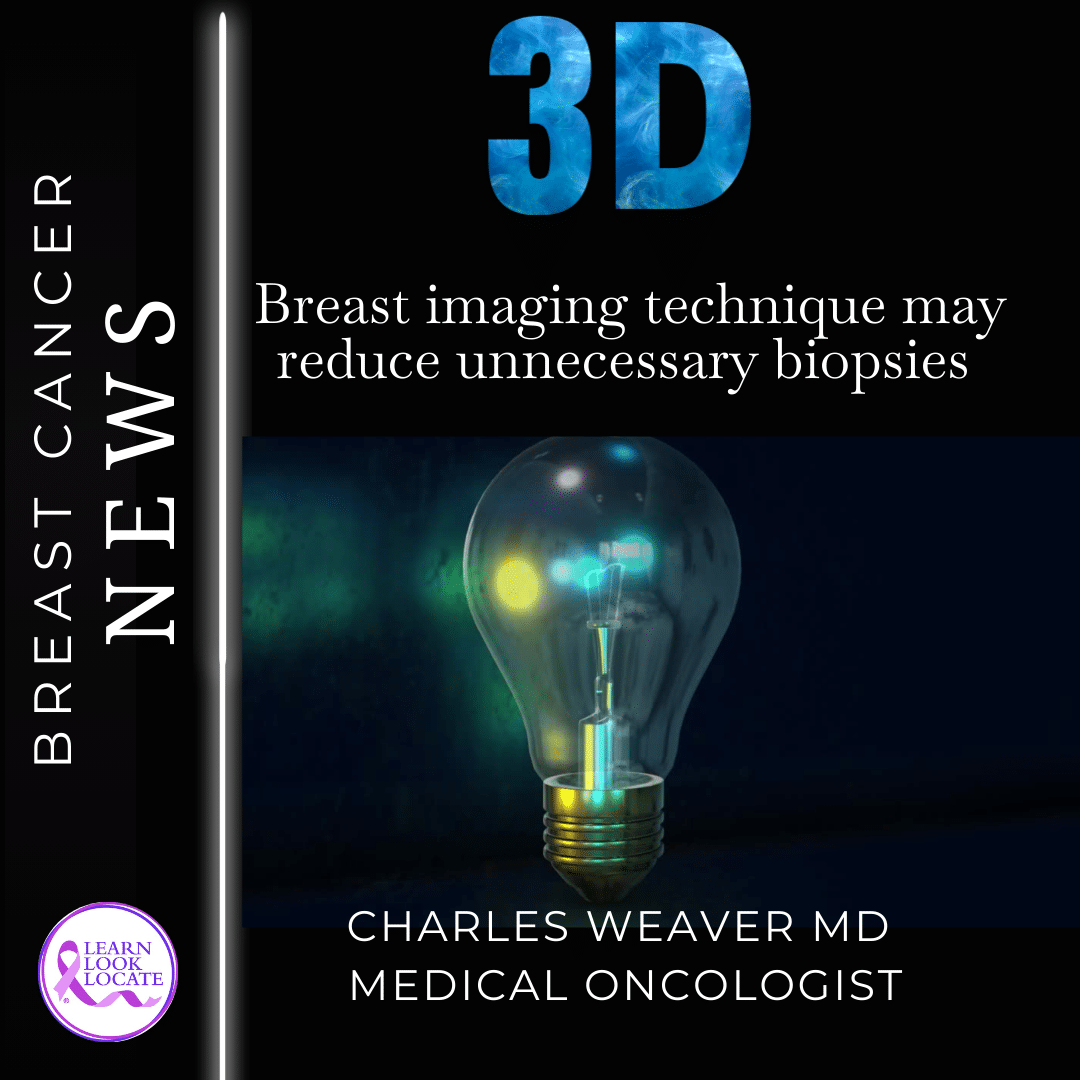
The Future in 3D: Revolutionizing Breast Cancer Screening to Minimize Invasive Tests
by Dr. Elizabeth Chabner M.D. and C.H. Weaver M.D.
Breast cancer screenings are often considered a dreaded yet necessary medical appointment by many women. And although the procedure takes only a fraction of your day, it can be uncomfortable and lead to anxious sleepless nights waiting for the results. However, new 3D imaging technologies are set to make the process more efficient and potentially save women from unnecessary invasive procedures.
The Odds Are in Your Favor, But Early Detection Still Matters
First things first: try to relax. For every 1,000 mammograms, only fewer than four result in a cancer diagnosis. But early detection significantly improves the odds of successful treatment, so they are necessary. And for women diagnosed at an early stage, the chances of beating breast cancer are incredibly high. Also, different facilities offer varying levels of technology and expertise – so ask how current the mammogram machine is and verify that the facility holds an FDA certificate. This helps ensure that the facility meets high safety and quality standards.
Some Other Important Things to Keep in Mind:
- Radiologist Availability: Find a facility where a radiologist is readily accessible to help expedite the decision-making process for additional views.
- Consistency and Records: If you’re satisfied with your first mammogram, stick with that same facility each time for easier year-to-year comparisons. And always bring or send ahead past mammograms and breast treatments to the new location if you decide to switch facilities.
- Timing: Try to avoid scheduling during the week before your menstrual cycle for a mammogram appointment – this will minimize discomfort.
- Communication: Always inform the medical team of any new symptoms or relevant family history you might have.
- Preparation: Be sure and show up to the appointment clean, but avoid using any skin products that could interfere with mammogram readings.
- Attire: Try to wear a two-piece outfit during the procedure. That way you only have to remove your top, making you more comfortable. Most facilities will also provide appropriate gowns.
- Patience: While most mammograms are quick, be prepared for some office wait time. Also, breast compression can be uncomfortable during the procedure but it is necessary for accurate results. The technologist will place each breast on the machine’s lower plate, then the upper plate is lowered to compress the breast for a few seconds or so, while pictures are taken. Discomfort is normal, but outright pain is not – so stay in communication with the mammogram team and let them know if the procedure ever starts to become too uncomfortable or painful.
- Results and Follow-Up: Legally, the facility must send you results through either a phone call or letter. So contact the facility if you haven’t heard back within 10 days.
- Call-Backs: Being called back for additional testing is fairly common. Don’t panic. It DOES NOT automatically mean a cancer diagnosis (less than 10% usually). So try to remain calm. And you should always ask the doctor to explain the reasoning for the call-back decision – most will be happy to do so.
A Bright Future for 3D Imaging
As 3D imaging technology becomes more widespread, it holds the promise of making mammograms more precise, thereby reducing the need for unnecessary biopsies. It’s another step forward in empowering women with better tools for early detection that can ultimately save lives.
About Elizabeth Chabner Thompson, M.D., M.P.H.
Elizabeth Chabner Thompson is a radiation oncologist, patient advocate, and medical entrepreneur. She earned her medical degree from Johns Hopkins University School of Medicine and her Master of Public Health degree from Harvard University. As founder of BFFL Co., she develops products that improve the patient experience before, during, and after hospitalization in a way that preserves dignity and enhances recovery, including the Elizabeth Pink Surgical Bra.® Dr. Thompson is active in the Harvard School of Public Health Leadership Council, Johns Hopkins University Medical School Alumni Council, and Mt. Sinai Dubin Breast Center Advisory Board.
About Dr. C.H. Weaver, M.D.
Dr. Charles Weaver is a Medical Oncologist and the founder and editor of CancerConnect. After training at the University of Pennsylvania, Fred Hutchinson Cancer Center and The National Institute of Health, Dr Weaver founded CancerConnect with the goal of providing information and support to cancer patients and their caregivers. He has published in the New England Journal of Medicine, Blood, Journal of Clinical Oncology, and has authored over 9000 articles for patients on the management of cancer.
(Article originally published on AWomansHealth.com. Modified on 10/2023 with author permission.)
References and Supplemental Reading: Cancer Connect Breast Cancer Resource Center
